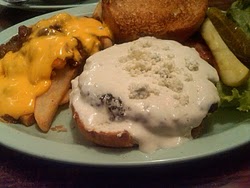One of the main ideas from Eating Animals by Jonathan Safran Foer is focusing on what people eat and having them to think about what they eat. I believe that most Americans even people in general consume all types of food on a daily basis not knowing what they’re really eating. If people knew about the food they were eating, would they choose different food choices? Maybe/maybe not, different feelings would arise and maybe some people would even want to educate themselves on the foods their eating.
Do we really know the foods were consuming? How can we identify the foods that are edible or not, and who’s to say what is. Majority of people around the world eat meat, whether it be chicken, beef, or pork, we indulge in the “practice” of eating meat on a daily basis. But what if what were really eating isn’t what we think its is, or can we eat something that people would think twice about eating it. In Eating Animals by Jonathan Safran Foer, he speaks about eating dogs, one might say how immoral that is but truth is in 44 states it’s perfectly legal and normal (Foer, 24).
Yeah it sounds weird when hearing and speaking about people eating their dogs, because it’s out of the norm for most people, they’re animals for goodness sake. “Don’t eat animals with significant mental capacities” (Foer, 25) Is A dog the only animal with such significance, might as well include the pig, cow, chicken and sea animals, because properly cooked dog meat poses no greater health risks than the meat were already eating (Foer, 26). For all we know we could be eating dog meat as we speak, would people stop eating meat if it was true, I say no. For the simple fact if they were eating it for this long and haven’t gotten sick, what’s the point of stopping now, it’s obviously good. Point of it all people should pay a little more attention to what they eat, and if eating a dog is so bad, think about the steak, chicken cutlet, and bacon at your dinner tables.
